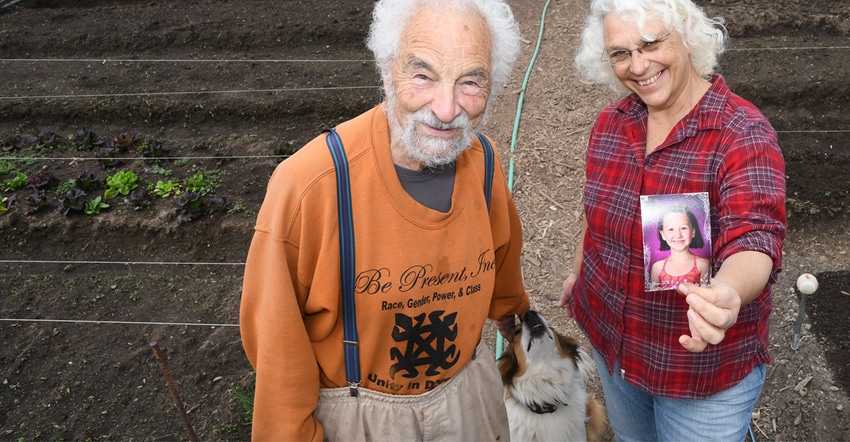April 7, 2017

Rebekah Rice is seeding plants she may never harvest, and she’s fine with that. “Adding medicinal crops is part of long-term diversification to make this farm financially successful for my granddaughter. I love the idea that in 120 years this farm may have a tree being harvested that I planted in 2017.”
Rice is one of 32 small farmers in 23 counties across New York participating in a medicinal plant project funded by New York Farm Viability Institute. The project targets 50 species with an establishment-to-harvest range of one to 20-plus years.
Project leader Jean Giblette calculates that New York is a $30 million herbal medicine market — one that currently imports 100% of its product from China. “Chinese herbal medicine is a complex science using mostly perennial plants that are highly valuable when combined by licensed practitioners in individualized formulas,” explains Giblette, who has grown Asian medicinal plants on her own High Falls Gardens in the mid-Hudson Valley since 1994.
Her New York grower network is building its “fresh, locally grown” seed stock capacity aimed at supplying more than 3,500 licensed acupuncture and Oriental medicine practitioners in the state. Nine Mile Farm is one of them.
How it fits the farm
Rice farms 92 acres at Nine Mile Farm at Delmar with her father, 87-year-old Michael Rice. For them, medicinals production is a natural next step after 50-plus years of growing vegetables and cut flowers. “Working with medicinal roots, trees and herbs is compelling for me, not for any instant return but for a deeper value in the potential to grow plants that can help people,” she reflects.
Growing medicinal herbs isn’t for everyone, she concedes. “The long-term investment in medicinals isn’t for the impatient and not a quick financial fix. We really don’t yet know the true financial value to the farmer. Those of us in Jean’s project are going on faith that the market is there to grow into.”
Carefully selected propagators supply growers with seed or plant starts. Rice’s farm is well-suited for the necessarily strict perennial polyculture standards and is certified naturally grown.
“I save the very best of my seed for disease resistance. My 12 hives of bees have so much food here they don’t need to leave the farm,” she adds.
The nearest neighbor is a half-mile away with forested buffers in between. Land between windbreaks is well-suited for medicinal trees, notes this farmer. Her high tunnel protects potted trees — the bark or flowers of which will be harvested in the future.
Shifting her production mix
In 2017, Rice will wholesale vegetables and expand her sheep flock, but not operate her Community Supported Agriculture enterprise. Instead, she’ll concentrate on soil preparation for the medicinals. At least 100 individual plants of each herbaceous perennial species will be grown to preserve genetic diversity.
Her cut-flower peonies will be replaced with Giblette’s medicinal peony root cuttings that require several years to establish before separating to expand acreage, with a percentage sold. All of her mint, previously distributed through the CSA, will be grown for the project. She’ll submit cut samples at various growth stages to practitioners for collective evaluation to determine optimal harvesting methods.
“The mint will be grown to match practitioners’ expectations, including cutting sizes, leaf-to-stem ratio, smell and taste,” Rice explains. “With a leaf product like mint, we expect to exceed the freshness and quality of imported product by a wide margin.”
Rice hopes to develop the subtle, thousands-of-years-old skill that enables practitioners to judge dried plant quality by touch. “I know how to pick tomatoes by feel. I want to learn the harvest feel for these new crops and how to assure the quality is there for practitioners to use them to good result.”
NYFVI funding underwrote a webinar series for Cornell Cooperative Extension educators, advised by horticulture professor Marvin Pritts. Its content will serve as an information resource for growers and may be modified to create a certificate in Chinese medicinal herb horticulture for licensed practitioners.
Giblette is an author, speaker and consultant who works with an affiliated nonprofit organization, High Falls Foundation Inc., at Philmont, N.Y. She has directed a program in botanical studies on behalf of the nation’s 50 graduate schools of acupuncture and oriental medicine.
For more on the medicinal plant project, contact Giblette at 518-672-7365 or email [email protected].
Dunn writes from Mannsville, N.Y.
NYFVI is a farmer-led nonprofit that invests in innovative projects to increase the success of ag production enterprises, protect farm-based natural resources and produce measurable farm-level results. Visit nyfvi.org for more information.
Dig into these medicinal herb networks
Information about ancient-world cures has not been forgotten. There’s much to be learned from these modern web networks:
• Appalachian Medicinal Herb Growers Consortium/Blue Ridge Center for Chinese Medicine: brccm.org.
• Northwest Asian Medicinal Herb Network: facebook.com/NorthwestAsianMedicinalHerbNetwork.
• You’ll also find other resources at localherbs.org.
About the Author(s)
You May Also Like




